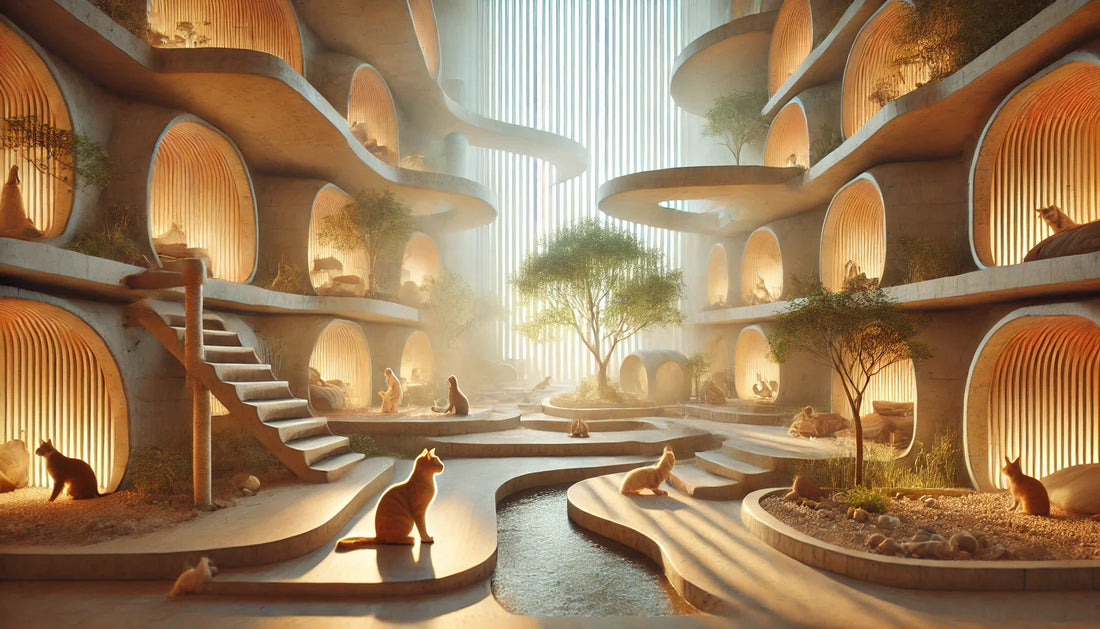
The Art of Companionship — The Aesthetics of Coexistence
Share
To live alongside another being is not to possess it.
It is to harmonize — to find beauty in difference, rhythm in silence, and meaning in the spaces shared between two lives.
At Paw Claws Corner, we do not see companionship as ownership.
It is an architecture of empathy — a dwelling built not with walls or words,
but with patience, respect, and the quiet artistry of attention.
A home that welcomes an animal is not simply decorated; it is enlightened.
Every choice of texture, proportion, and placement becomes an act of conversation,
a gesture that says, “You belong here too.”
The Rhythm of Mutual Presence
Companionship is tempo.
It is the pulse that connects two creatures who breathe differently yet live to the same unseen metronome.
The dog who pauses at the window just as you close your book.
The cat who curls into your silence when the day has been unkind.
These are not coincidences — they are alignments,
proof that empathy, when shared daily, becomes a kind of rhythm.
Living with an animal means surrendering to this rhythm —
a slower, softer cadence that reminds us that life need not always be hurried to be full.
“They teach us the luxury of stillness — the art of doing nothing beautifully.”
Coexistence as Design
Every space that holds a creature must also hold peace.
To coexist is to design with intention — not to impose symmetry, but to create harmony.
A rug that absorbs the sound of paws,
a cushion that yields with quiet generosity,
a window left open to the world they still long to sense —
these are not aesthetic gestures alone;
they are spatial acts of love.
At Paw Claws Corner, we believe that coexistence is not merely functional balance;
it is moral geometry.
To share a space with an animal is to admit that we are not its master,
but its collaborator in the project of comfort.
The Language of Touch and Distance
Companionship is fluent in silences.
It speaks through the distance you allow and the touch you offer.
When a creature approaches, it does not demand affection — it tests atmosphere.
Your calm becomes their permission.
Your steadiness becomes their trust.
To touch a being who trusts you is a privilege measured not in seconds but in sincerity.
In that quiet contact, two species converge —
and for a fleeting instant, hierarchy dissolves.
It is in that pause, that breath, that shared heartbeat,
that the word belonging finally finds its meaning.
The Aesthetics of Restraint
True beauty is never loud.
It whispers through balance — through what is left unsaid and undone.
The same applies to companionship.
We love best not when we flood our pets with gestures,
but when we offer them space to simply be.
Design, too, must honor this principle.
To clutter is to control;
to simplify is to respect.
A well-designed object does not demand attention — it gives it.
A well-designed space does not display love — it embodies it.
At Paw Claws Corner, restraint is not absence; it is refinement —
the elegance of knowing when enough has been said.
Companionship as Mirror
Animals, in their honesty, reflect the quiet truths we hide from ourselves.
They remind us that affection can exist without performance,
that loyalty requires no language,
and that beauty, when lived daily, requires nothing ornamental.
To live with them is to live more deliberately.
To feed, to clean, to rest beside —
these are not chores; they are small meditations on care.
Every day with them becomes a rehearsal for gentleness.
And in that repetition, our humanity becomes more articulate.
Conclusion
Companionship is not a possession but a practice —
a discipline of empathy, a design of shared peace.
In its purest form, it is both art and architecture:
a structure built not of wood and metal, but of trust, time, and tenderness.
At Paw Claws Corner, we believe coexistence is the most elegant design of all.
It requires no ornament, only honesty —
and in that honesty, the world feels a little more whole.
